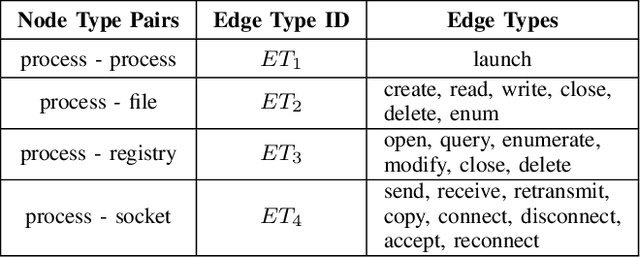Tiantian Zhu
Defense Against Model Stealing Based on Account-Aware Distribution Discrepancy
Mar 16, 2025



Abstract:Malicious users attempt to replicate commercial models functionally at low cost by training a clone model with query responses. It is challenging to timely prevent such model-stealing attacks to achieve strong protection and maintain utility. In this paper, we propose a novel non-parametric detector called Account-aware Distribution Discrepancy (ADD) to recognize queries from malicious users by leveraging account-wise local dependency. We formulate each class as a Multivariate Normal distribution (MVN) in the feature space and measure the malicious score as the sum of weighted class-wise distribution discrepancy. The ADD detector is combined with random-based prediction poisoning to yield a plug-and-play defense module named D-ADD for image classification models. Results of extensive experimental studies show that D-ADD achieves strong defense against different types of attacks with little interference in serving benign users for both soft and hard-label settings.
SoK: Knowledge is All You Need: Last Mile Delivery for Automated Provenance-based Intrusion Detection with LLMs
Mar 05, 2025



Abstract:Recently, provenance-based intrusion detection systems (PIDSes) have been widely proposed for endpoint threat analysis. However, due to the lack of systematic integration and utilization of knowledge, existing PIDSes still require significant manual intervention for practical deployment, making full automation challenging. This paper presents a disruptive innovation by categorizing PIDSes according to the types of knowledge they utilize. In response to the prevalent issue of ``knowledge silos problem'' in existing research, we introduce a novel knowledge-driven provenance-based intrusion detection framework, powered by large language models (LLMs). We also present OmniSec, a best practice system built upon this framework. By integrating attack representation knowledge, threat intelligence knowledge, and benign behavior knowledge, OmniSec outperforms the state-of-the-art approaches on public benchmark datasets. OmniSec is available online at https://anonymous.4open.science/r/PIDS-with-LLM-613B.
TREC: APT Tactic / Technique Recognition via Few-Shot Provenance Subgraph Learning
Feb 23, 2024



Abstract:APT (Advanced Persistent Threat) with the characteristics of persistence, stealth, and diversity is one of the greatest threats against cyber-infrastructure. As a countermeasure, existing studies leverage provenance graphs to capture the complex relations between system entities in a host for effective APT detection. In addition to detecting single attack events as most existing work does, understanding the tactics / techniques (e.g., Kill-Chain, ATT&CK) applied to organize and accomplish the APT attack campaign is more important for security operations. Existing studies try to manually design a set of rules to map low-level system events to high-level APT tactics / techniques. However, the rule based methods are coarse-grained and lack generalization ability, thus they can only recognize APT tactics and cannot identify fine-grained APT techniques and mutant APT attacks. In this paper, we propose TREC, the first attempt to recognize APT tactics / techniques from provenance graphs by exploiting deep learning techniques. To address the "needle in a haystack" problem, TREC segments small and compact subgraphs covering individual APT technique instances from a large provenance graph based on a malicious node detection model and a subgraph sampling algorithm. To address the "training sample scarcity" problem, TREC trains the APT tactic / technique recognition model in a few-shot learning manner by adopting a Siamese neural network. We evaluate TREC based on a customized dataset collected and made public by our team. The experiment results show that TREC significantly outperforms state-of-the-art systems in APT tactic recognition and TREC can also effectively identify APT techniques.
A Heterogeneous Graph Learning Model for Cyber-Attack Detection
Dec 16, 2021



Abstract:A cyber-attack is a malicious attempt by experienced hackers to breach the target information system. Usually, the cyber-attacks are characterized as hybrid TTPs (Tactics, Techniques, and Procedures) and long-term adversarial behaviors, making the traditional intrusion detection methods ineffective. Most existing cyber-attack detection systems are implemented based on manually designed rules by referring to domain knowledge (e.g., threat models, threat intelligences). However, this process is lack of intelligence and generalization ability. Aiming at this limitation, this paper proposes an intelligent cyber-attack detection method based on provenance data. To effective and efficient detect cyber-attacks from a huge number of system events in the provenance data, we firstly model the provenance data by a heterogeneous graph to capture the rich context information of each system entities (e.g., process, file, socket, etc.), and learns a semantic vector representation for each system entity. Then, we perform online cyber-attack detection by sampling a small and compact local graph from the heterogeneous graph, and classifying the key system entities as malicious or benign. We conducted a series of experiments on two provenance datasets with real cyber-attacks. The experiment results show that the proposed method outperforms other learning based detection models, and has competitive performance against state-of-the-art rule based cyber-attack detection systems.
 Add to Chrome
Add to Chrome Add to Firefox
Add to Firefox Add to Edge
Add to Edge